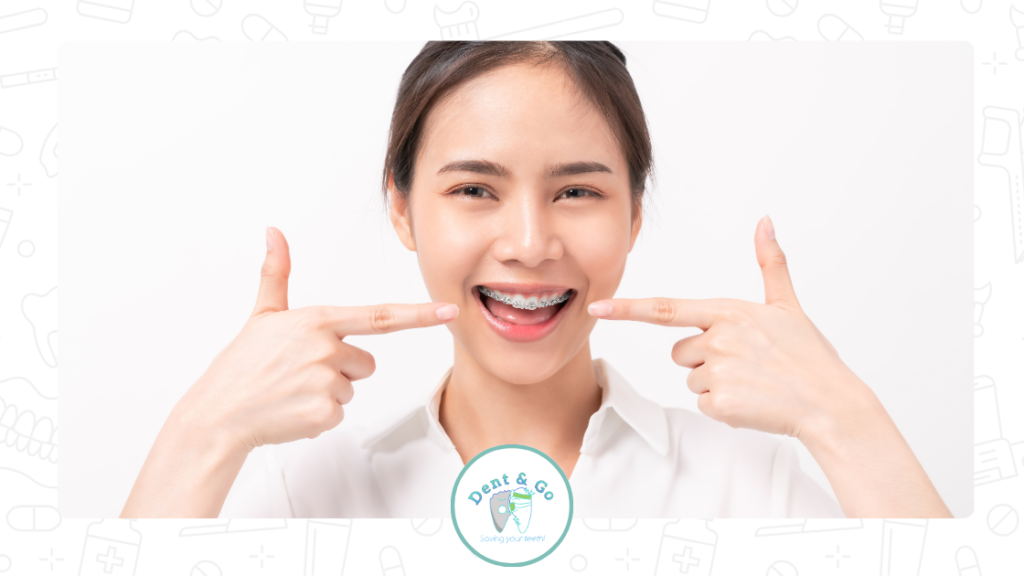So, you’ve finally had your braces removed, and you’re enjoying the freedom of a straighter, healthier smile. But before you celebrate too much, there’s one more important step to maintain those beautifully aligned teeth—wearing a retainer. Many people underestimate the importance of retainers after braces, but they play a crucial role in keeping your smile intact. Here’s everything you need to know about wearing retainers, why they matter, and how to take care of them properly.
Why Do You Need to Wear a Retainer?
Braces work by gradually shifting your teeth into their correct positions. However, once your braces are removed, your teeth still have a tendency to move back to their original placement. This process is known as orthodontic relapse, and it happens because the ligaments and bone around your teeth need time to settle into their new positions.
A retainer helps to hold your teeth in place while your jawbone stabilises. Without a retainer, all the time, effort, and money spent on braces could go to waste as your teeth begin to shift again.
Types of Retainers
There are two main types of retainers, and your orthodontist will recommend the best one based on your dental needs.
1. Fixed Retainers
A fixed retainer is a thin metal wire that is bonded to the back of your front teeth. Since it’s attached permanently, you don’t have to worry about forgetting to wear it. Fixed retainers are particularly useful for people at higher risk of relapse, as they provide continuous support.
Pros:
- Always in place, so no need to remember to wear it
- Hidden behind the teeth, making it invisible
- Provides strong support for teeth that are prone to shifting
Cons:
- Requires extra care when brushing and flossing
- Can collect plaque if not cleaned properly
2. Removable Retainers
Removable retainers are plastic or acrylic devices that can be taken out when eating, drinking, or cleaning. There are two main types:
- Hawley Retainers: Made of acrylic and metal wire, they are durable and adjustable.
- Clear Plastic Retainers: These look similar to Invisalign trays and fit snugly over your teeth.
Pros:
- Easier to clean and maintain
- Can be removed when eating
- Less risk of plaque build-up compared to fixed retainers
Cons:
- Can be lost or damaged if not stored properly
- Must be worn consistently to be effective
How Long Should You Wear a Retainer?
Most orthodontists recommend wearing a retainer full-time for at least the first few months after braces are removed. This means wearing it day and night, only taking it out for eating and cleaning.
After the initial period, you may be able to switch to wearing your retainer only at night. However, retainers should be worn for several years, or even for life, to ensure your teeth remain in place. Some people who stop wearing their retainers completely experience shifting, requiring further orthodontic treatment.
Caring for Your Retainer
To keep your retainer in good condition and your teeth healthy, follow these simple care tips:
- Clean your retainer daily: Use a soft toothbrush and mild soap or retainer cleaner. Avoid using hot water, as it can warp plastic retainers.
- Store it properly: Always keep your retainer in its case when not in use to avoid loss or damage.
- Avoid harsh chemicals: Do not clean your retainer with toothpaste, as it can be too abrasive.
- Keep it away from heat: Never leave your retainer in direct sunlight or hot water, as it can become misshapen.
- Brush and floss regularly: Maintaining good oral hygiene will prevent plaque build-up around fixed retainers and keep your mouth fresh.
What Happens If You Stop Wearing Your Retainer?
If you stop wearing your retainer, your teeth will gradually shift back to their original positions. This is especially common in the first few months after braces, as your teeth are still adjusting to their new alignment. Over time, even minor movements can lead to noticeable changes in your smile.
To avoid undoing all the hard work of wearing braces, make your retainer part of your daily routine. Think of it as insurance for your smile—a small effort that ensures long-lasting results.
Wearing a retainer after braces is just as important as the treatment itself. Whether you have a fixed or removable retainer, wearing it consistently will help maintain the results of your orthodontic treatment.
If you want to keep your teeth straight for years to come, follow your orthodontist’s recommendations and take good care of your retainer. Your future self will thank you for it!

